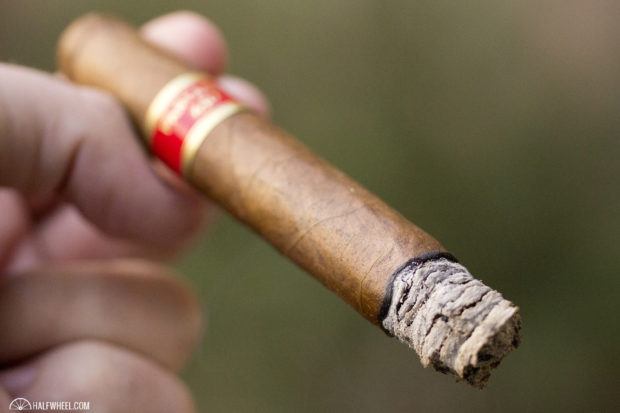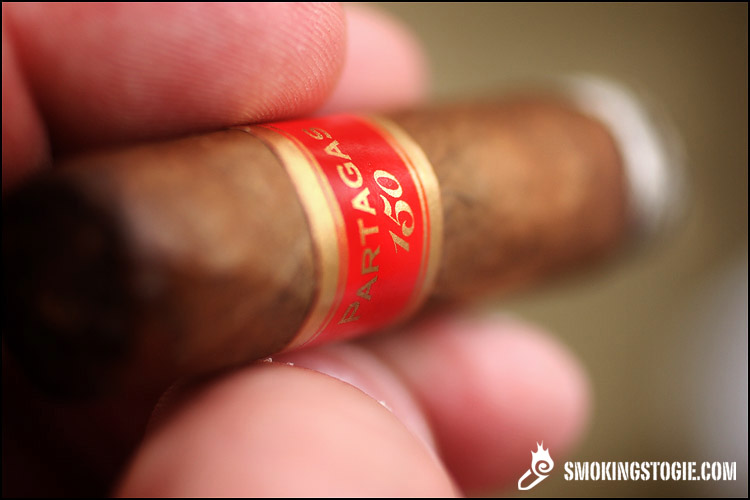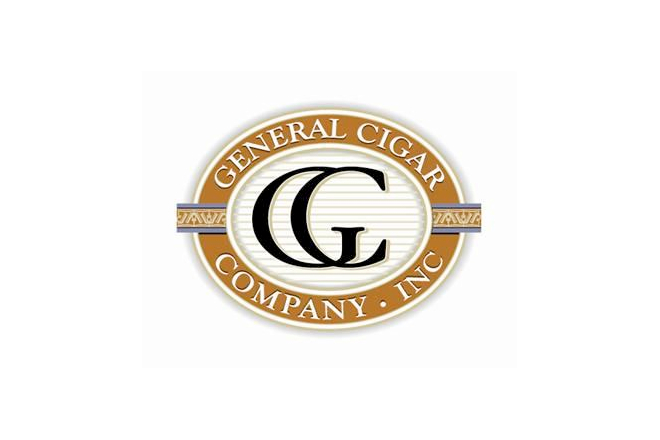It’s arguably one of the most storied releases in the history of General Cigar Co.: the Partagas 150.
The line celebrated the 150th anniversary of the Partagas brand, which started in Cuba and split into a Cuban version and a non-Cuban version, owned by General Cigar Co., created in the years following the United States’ embargo against the island. Released in 1995 under the leadership of Edgar Cullman Sr., the line used a Cameroon wrapper from 1977, with a binder grown in Mexico and fillers from the Dominican Republic and Mexico.
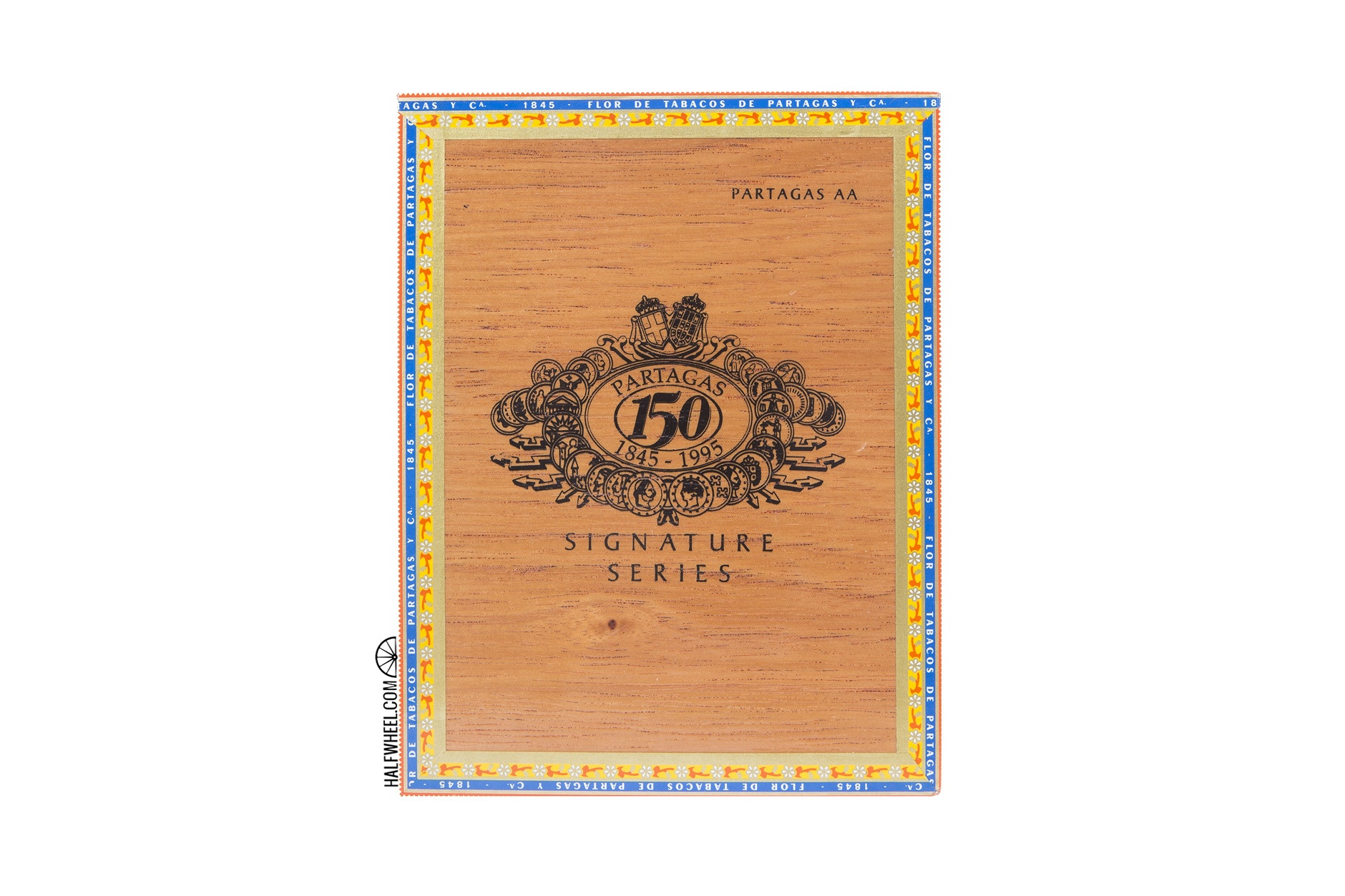
 That wrapper is notable not jut for being 40-years-old now, but for coming from Tabacalera, the Spanish tobacco monopoly that would evolve over time into Altadis, which is one of the main competitors to General Cigar Co. As my colleague Charlie Minato noted, at the time of the cigar’s creation, Tabacalera and General Cigar Co. were said to be considering a merge, which helped facilitate transfer of the tobacco from the company’s facilities in Madrid.
That wrapper is notable not jut for being 40-years-old now, but for coming from Tabacalera, the Spanish tobacco monopoly that would evolve over time into Altadis, which is one of the main competitors to General Cigar Co. As my colleague Charlie Minato noted, at the time of the cigar’s creation, Tabacalera and General Cigar Co. were said to be considering a merge, which helped facilitate transfer of the tobacco from the company’s facilities in Madrid.
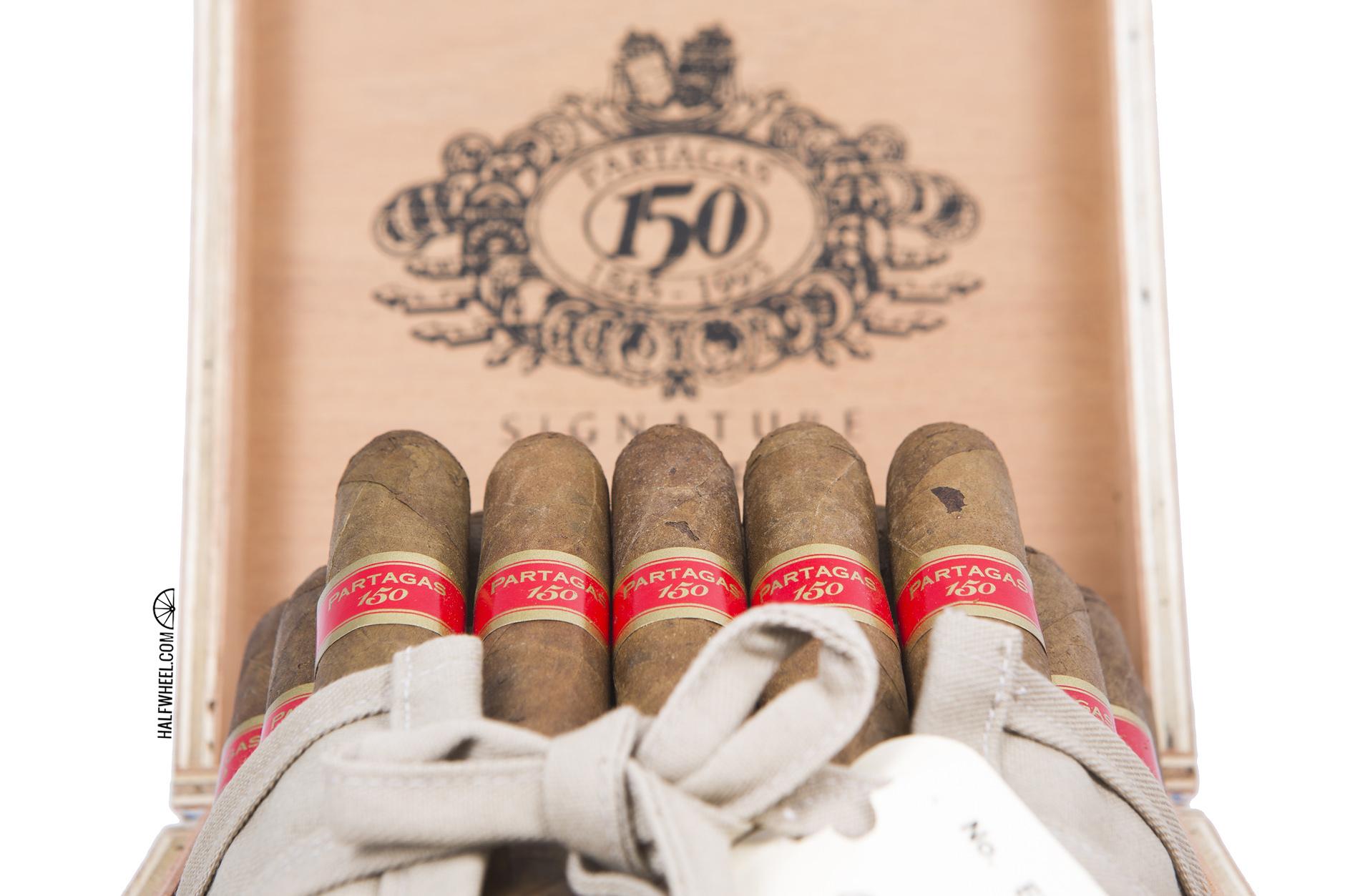
One million cigars were rolled for the line, split into eight vitolas with varying quantities produced for each.
- Partagas 150 A (6 3/4 x 43)
- Partagas 150 B (6 1/2 x 47)
- Partagas 150 C (5 1/2 x 49)
- Partagas 150 Don Ramon (7 x 52)
- Partagas 150 Robusto (4 1/2 x 49)
- Partagas 150 AA (7 1/2 x 49)
- Partagas 150 D (5 x 38)
- Partagas 150 Signature Series Figurado (6 x 50)
While the cigars have been trickling out since that initial release more than two decades ago, in April 2017, General Cigar Co. began offering what was said to be the final amounts of both the Partagas 150 and Partagas 160, which uses the same wrapper but with a Mexican San Andrés binder and filler of Dominican piloto cubano and Mexican San Andrés. Of the eight sizes of the Partagas 150, only the Don Ramon and Robusto were not part of the offering.
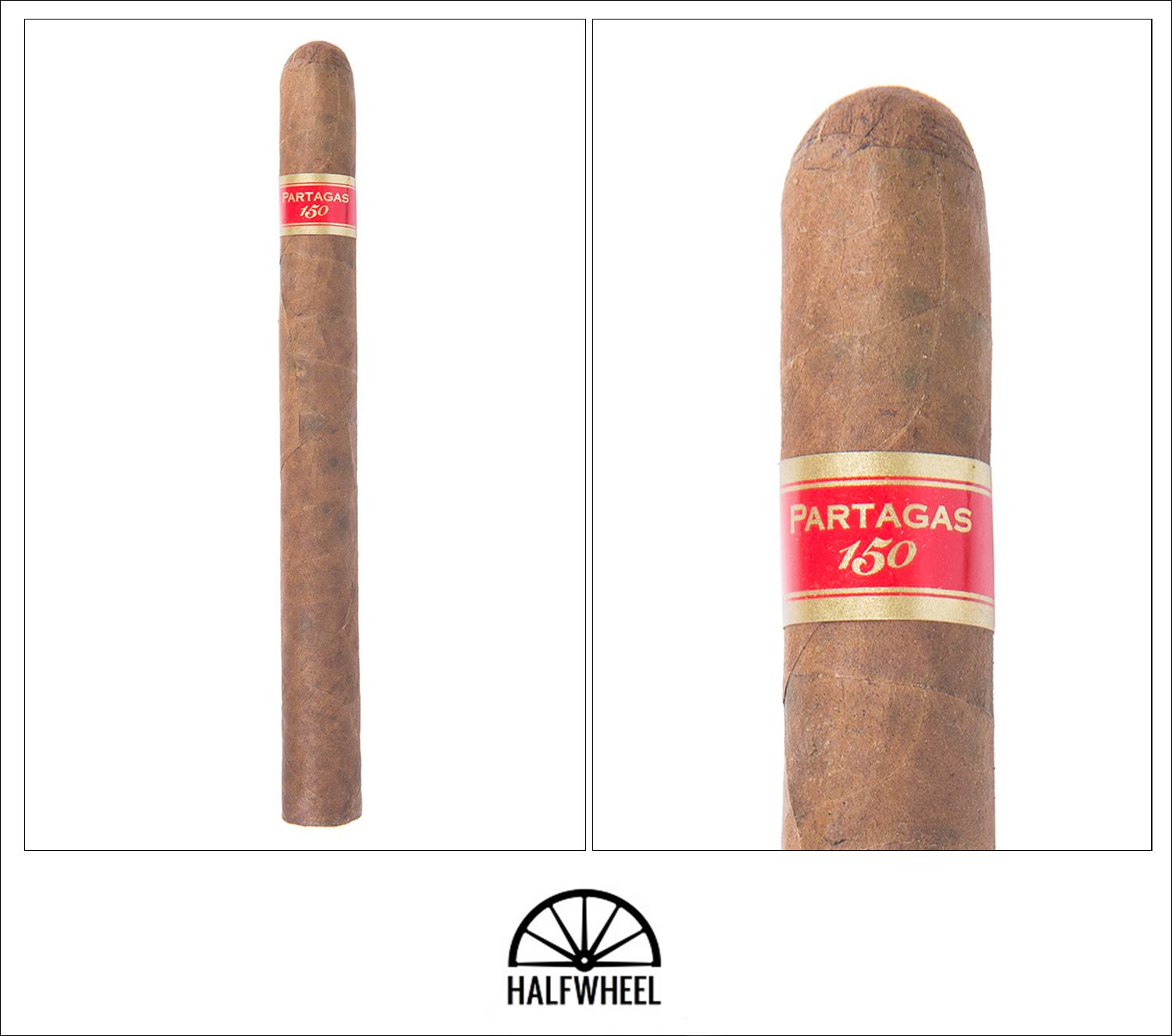
- Cigar Reviewed: Partagas 150 AA
- Country of Origin: Dominican Republic
- Factory: Menendez y Garcia
- Wrapper: Cameroon
- Binder: Mexico
- Filler: Dominican Republic & Mexico
- Length: 7 1/2 Inches
- Ring Gauge: 49
- Vitola: Double Corona
- MSRP: $72.99 (Boxes of 25, $1824.75)
- Release Date: 1995
- Number of Cigars Released: n/a
- Number of Cigars Smoked For Review: 2
The Partagas 150 AA is a gorgeous specimen thanks to its significant size, simple and elegant banding, and last but not least a gorgeous and toothy Cameroon wrapper leaf with a color that draws on medium browns and splashes it with reds, oranges, auburn, and amber. Save for a water mark on one of the samples, it’s a near flawless leaf. While on the big side, the double corona is a vitola I love and wish I could smoke more of if not for time and other limitations. I’m a bit surprised by how firm it is, and given the fragility of the wrapper I’m not going to squeeze too hard, but it’s easy to tell this is a very firm cigar. Aroma off the foot ranges from almost non-existent to just above mild, with a bit of orange rind and vanilla soft serve present on one sample, yanking my mind back to the ice cream cups I’d eat as a kid. The other is a bit more cedar leaning, with some subtle mixed nuts for depth. The cold draw is just a touch firm and has a more vibrant flavor of sweet cedar, but it is rather subdued and fades fairly quickly.
While the pre-light offerings from the Partagas 150 AA might have been subtle, the first puffs are far from it, offering a bit of biting cedar for the tip of the tongue out of the gate. There’s very little happening on the first retrohale other than a very soft smoke with a chalky sweetness that can’t quite settle between orange and mint. Fortunately it wakes up about three-quarters of an inch in as mellow black pepper joins the mix along with the more vibrant red chili pepper that Cameroon can offer. On the second sample, the wrapper shows its frailty, splitting with an audible tear shortly after lighting. The burn line only makes it about an inch before the first clump of ash drops, and the flavor shifts to a bit more of a plain cake donut base. The intensity of both the flavor and aroma ebb and flow for much of the first third, adding a bit of light earthiness on the tongue that has me thinking of Dominican terroir, while the nose gets a mild peppermint sensation. It is on the mild side of the strength spectrum, but I’m impressed by how vibrant the flavors can be, even as the range between medium-minus and medium. The burn line has been near razor sharp, the draw effortless, and smoke production more than satisfactory, with a thin wisp seemingly always wafting off the foot.

One of the things about Cameroon tobacco I find myself attracted to is that it offers me a profile I don’t get to experience regularly, and the start of the Partagas 150 AA’s second third has me enjoying struggling to find appropriate descriptors for the flavor. There’s a certain terroir that is present at the base, and with sweetness and pepper both on a bit of a hiatus, I find myself with notes of clay, chalk, and a bit of mineralogy that if you put in front of me I wouldn’t peg to any of the growing regions present in this cigar. To say that I stay perplexed though the midway point would be an understatement; why there is a bit of floral quality to the smoke, I feel as if I’m being presented with a new range of flavors, much as if trying a fruit for the first time. Past the midway point the notes get a bit more recognizable, as the sweet, red chili pepper sensation returns on a retrohale, and the clay note steps out on the palate. The cigar continues to burn incredibly well, though a crack appears on the first sample just below the band, something I’m hopeful won’t have any ill effects. The second sample, with the much more sizable crack, didn’t have any problems burning along well despite it. The draw also seems to have tightened up just a bit.
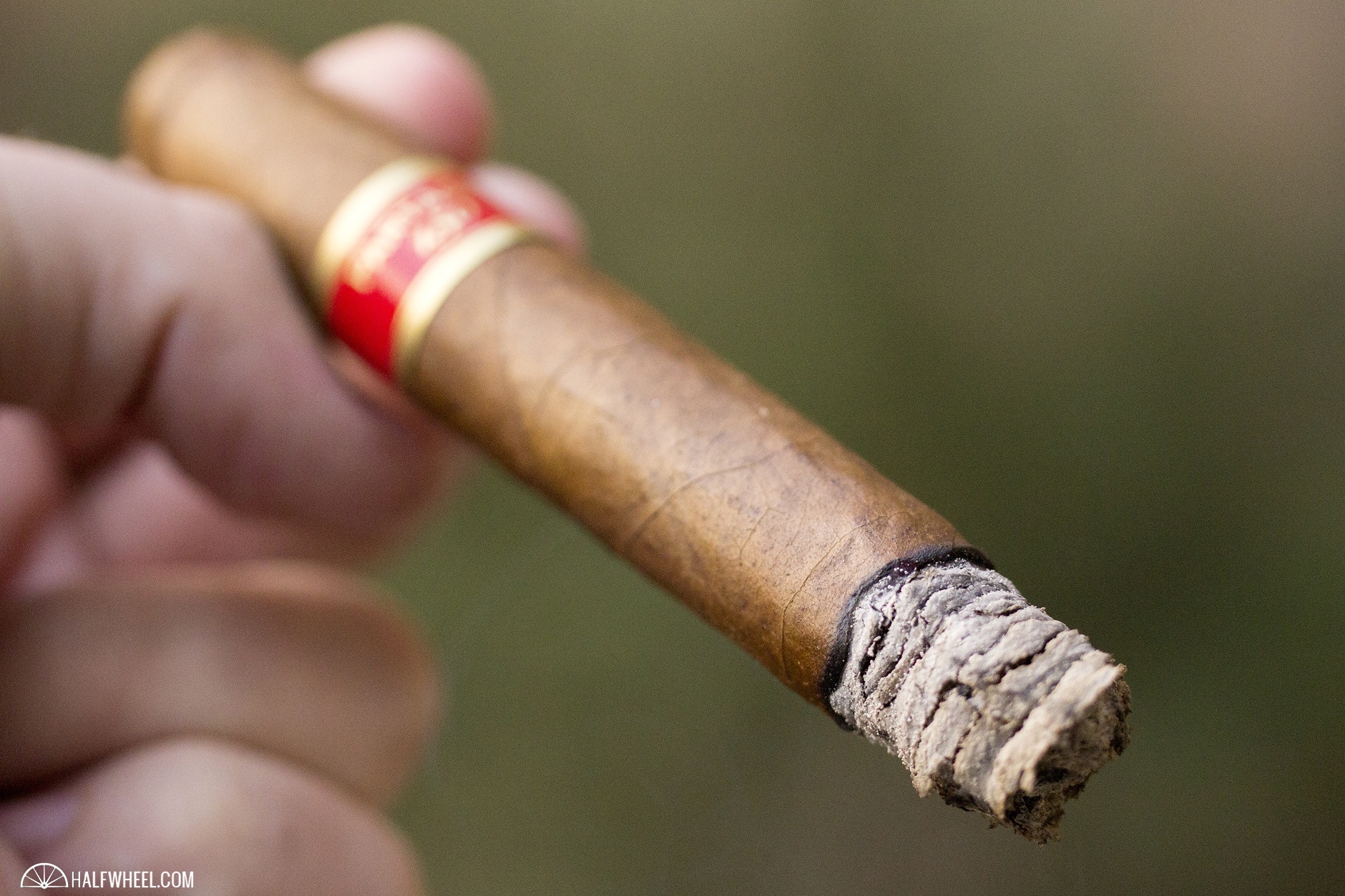
The final third of the Partagas 150 AA gets underway with a smoky caramel note that evolves out of the earthiness; it’s not overtly sweet but it certainly fills in something that I thought was lacking. There’s a bit more chalk once the band comes off, and the overall sense of terroir in the cigar continues to build. White pepper makes a somewhat unexpected appearance in the retrohale, which helps to add some brightness to the smoke. It’s not long before cedar is back, which provides a springboard for a campfire smokiness to turn the cigar’s direction, and while it’s enjoyable on its own, it ends up being the tipping point for the flavor. The final two inches bring together a slightly sour terroir that is the most Mexican I have tasted to this point, along with firewood and black pepper. The result is the fullest and sharpest flavor that the Partagas 150 AA has offered, though it has me craving the more subtle approach of the first third. The burn and construction remain stellar, ranking as one of the best performing cigars I’ve smoked in recent memory.
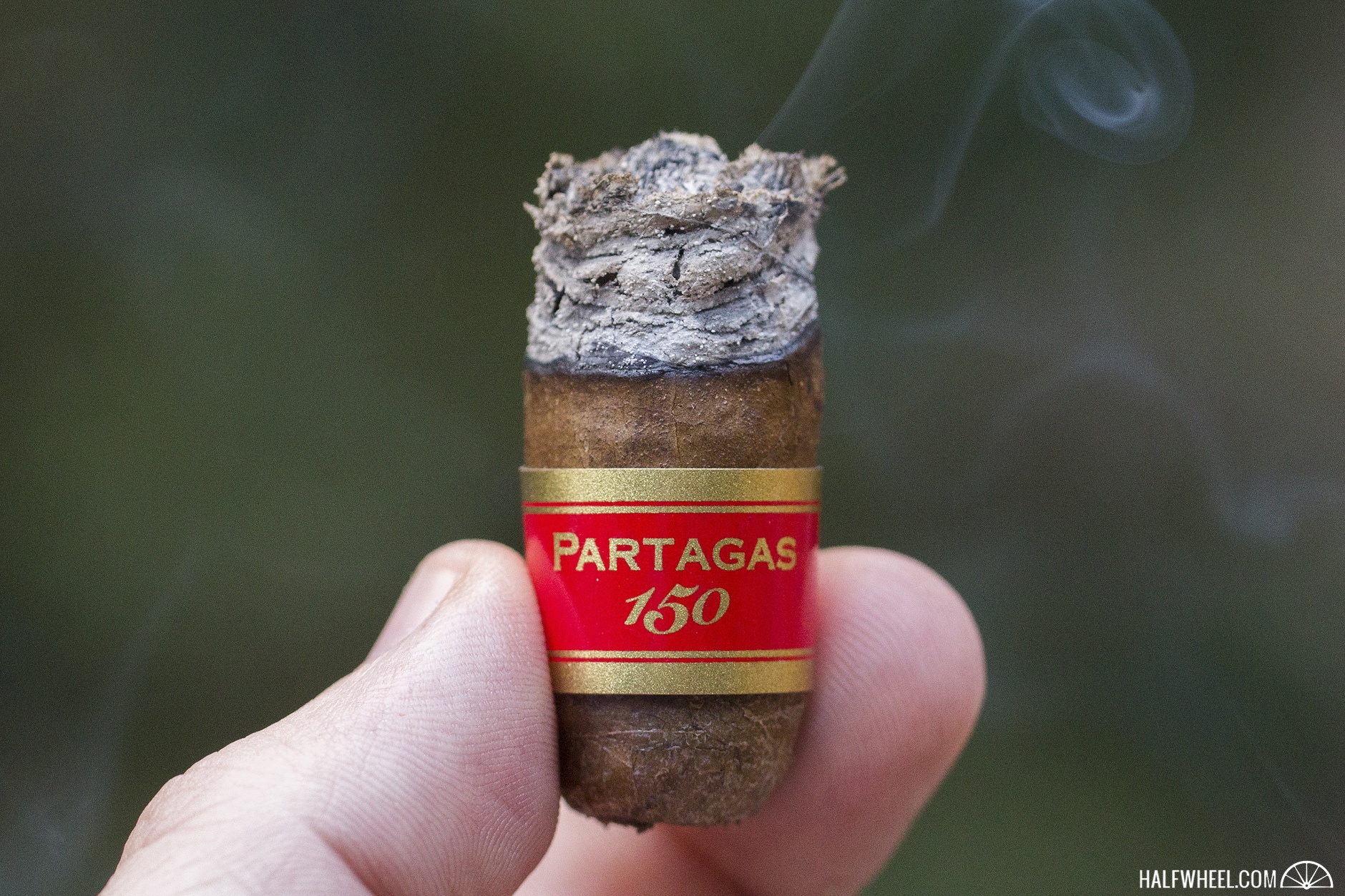
Final Notes
- I don’t think there was a single moment where there wasn’t a visible stream of smoke coming off the cigar while I rested.
- There are few types of tobacco that get me as simultaneously excited and nervous as Cameroon does; I love the flavors but despise its fragility, especially living in a hot and dry environment
- I cringe at the sound of a bursting wrapper, which happened shortly after lighting the second sample. The second sample ended up being pretty much everything I fear a Cameroon wrapper turning into: a fractured, splintered, blistering mess.
- It’s been brought up before, but one way to tell the difference between the Cuban Partagás apart is by the accent mark over the final a. General Cigar Co. doesn’t use it on their version of the line.
- There was noticeable variance in the vibrance of flavors between the two samples; the first was more alive than the second, which felt more aged than the second. It still offers a good profile, it just didn’t feel as engaging as the first.
- However, while the first sample offered the highest point, it also offered the lowest, as I found its final third to be less enjoyable than that of the second sample, which was more or less flat but enjoyable.
- It’s interesting to think how far Mexican tobacco has come from this release in terms of popularity and usage.
- I found there to be little if any nicotine strength from the Partagas 150 AA.
- The end of the band had something I can’t recall seeing on it: its length. In a white box was red text that read 2 13/16; I measured the band and sure enough, that’s how many inches long it is.
- We paid about $35 per cigar on these, though the only online retail listing I could find had them at $72.99 per cigar. An email sent to General Cigar Co. asking for the current MSRP was not returned.
- General Cigar Co. advertises on halfwheel.
- Final smoking time was two hours and 50 minutes on average.
- The cigars for this review were purchased by halfwheel.
- Site sponsor Corona Cigar Co. carries several sizes of the Partagas 150 line, but does not list the AA as in stock.
If there was something I was really hoping for from the two samples of the Partagas 150 AA that I smoked, it was some consistency between the two samples, yet that might have been something beyond what they were capable of delivering. There are certainly some similarities, but while the first sample provided a fairly vibrant experience that stretched out over three hours, the second sample tasted more like an old cigar until the final two and a half inches, when it suddenly woke up and put off a fairly simple charred pepper note on top of some firewood. There’s no doubt that I enjoyed both samples, though I can’t say I was floored by either other than in the first third of the first sample, which makes it a bit more challenging to recommend. However, there is some value to adding to your bank of experience a cigar with a 40-year-old wrapper and 22 years of age on it, so if you have the opportunity to enjoy one of the remaining Partagas 150s, in whatever size, I’d still say it’s a worthwhile endeavor.

